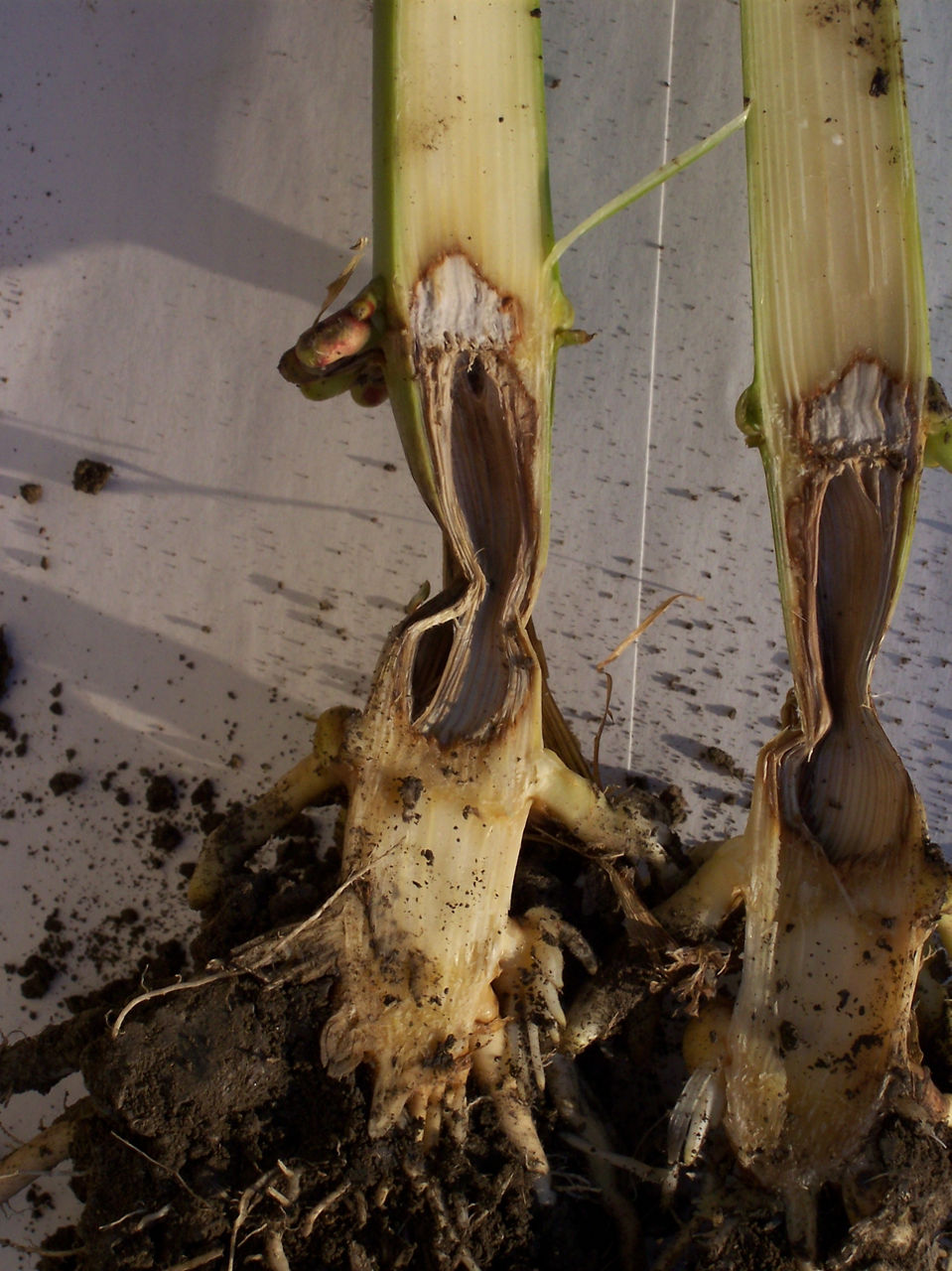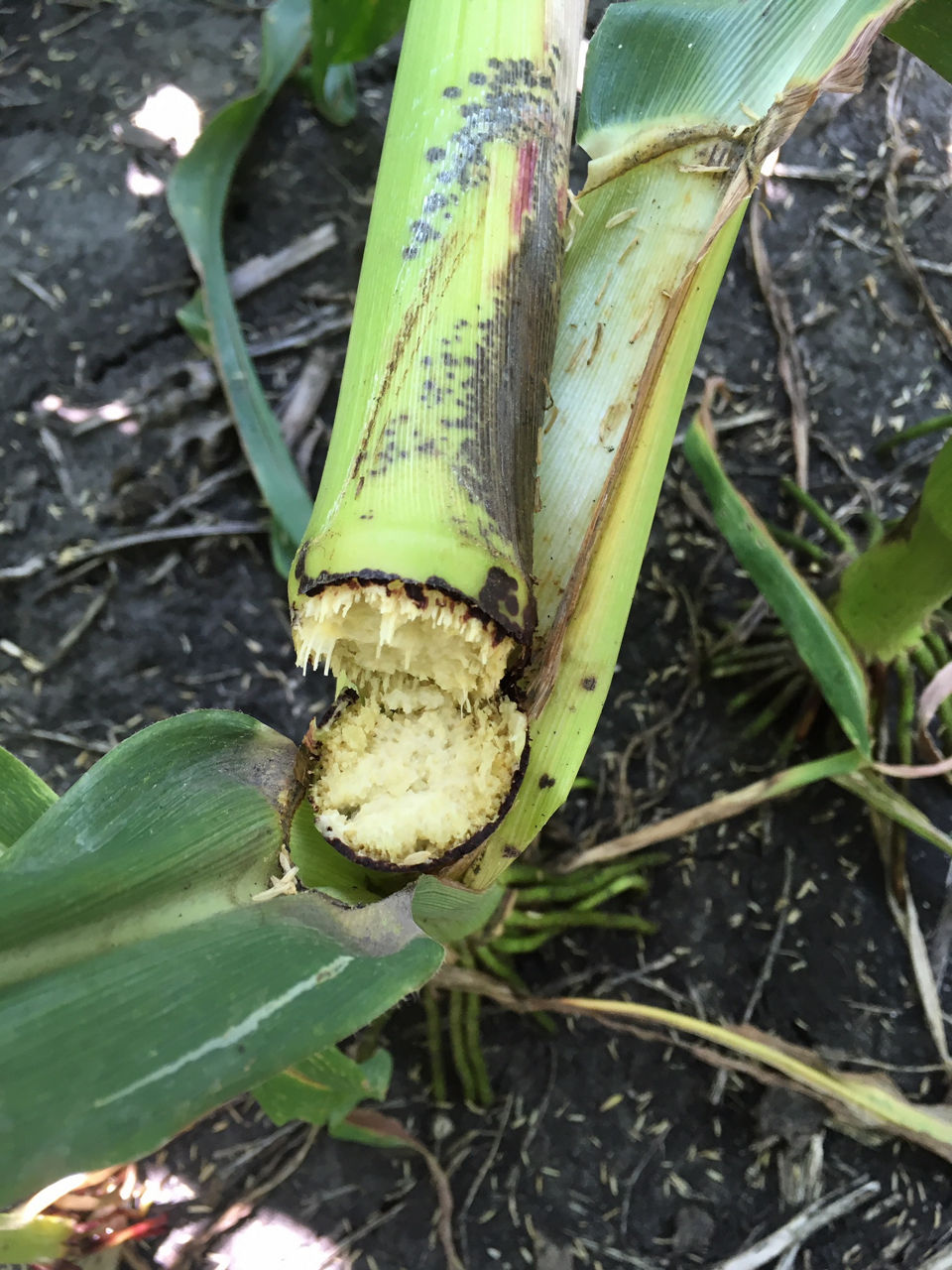3 MIN READ
Effects of Flooding or High Rain Events on Corn Diseases
October 17, 2024
Flooding or heavy rain events can negatively impact corn in many ways. Rain that occurs after planting through early emergence can increase the risk of seed or seedling diseases. If the events occur prior to emergence, soil crusting can reduce emergence and ultimately the final stand. Either event can cause nitrogen leaching, leading to reduced yield potential or the need to apply more nitrogen. Temporary flooding or heavy rain events during this vulnerable time period can encourage the development of later plant diseases. Prolonged submersion can result in plant death.
What diseases could result if the plant is temporarily submerged?
Assuming the plant is not killed, the most common disease associated with temporary submersion is crazy top, caused by Sclerophthora macrospora. While this disease seldom causes widespread losses, injury to plants in localized areas of the field can be substantial. The critical period for infection is between germination and the V4 growth stage. This fungus can infect corn as well as over 100 species of grasses, including both weeds and cultivated crops. The fungus requires a host plant for reproduction and overwinters in agricultural fields on grassy weeds in the absence of corn. The optimal conditions for development are temperatures between 53 and 63 °F (12 and 17 °C) combined with saturated soils for 24 to 48 hours.1 The major symptom of crazy top is the proliferation of the leafy tissue in place of the tassel (Figure 1). Other symptoms may include the lack of an ear and elongated and leafy ear shoots, stunted growth with narrow leaves, and excessive tillering. Management tactics include improving field drainage and controlling grassy weeds.2

If the corn is in the V4 growth stage, what is the risk of root rot with extremely wet soils for several days?
Under extreme soil saturation, the lack of oxygen results in stress on the plant that may predispose the roots to infection by Pythium, Fusarium, and Exserohilum. From the V4 growth stage until V6, the nodal roots have yet to provide the seedling with all required nutrition. The seed is connected to the seedling by a tube called the mesocotyl, and it is through this tube that the seedling obtains nutrients from the endosperm. Stunting can occur if the mesocotyl is damaged or infected, which can sometimes result in plant death. The infection and subsequent rot of the mesocotyl in the earlier growth stages can also lead to stalk and crown rot during later plant development. Seed treatments may help control or suppress these diseases, but their efficacy can decrease two to three weeks after planting.
What stalk rots can become an issue under these conditions?
While we most often think of stalk rots as occurring after pollination and during grain fill, Pythium stalk rot can infect corn between the V2 and R6 growth stages. Extreme and extended wet conditions with temperatures above 90 °F (32 °C) are ideal for infection. Fields that retain water are most susceptible. In most cases, the Pythium infection is limited to the first internode directly above the soil surface. The stalk can be easily collapsed at the site of infection and the tissue within the stalk is discolored (Figure 2). Pythium stalk rot may be confused with bacterial stalk rot, which has very similar symptoms; however, plants infected with bacterial stalk rot will have a very foul odor.3,4

What if the plant is not submerged, but the whorls have been filled with water for a few days because of excessive rainfall?
This might lead to Physoderma brown spot and/or Physoderma stalk rot. Corn in the whorl stages of V5 to V9 are most susceptible when water from rainfall or irrigation fill the whorl for an extended time.5 The correct combination of light, free water, and temperatures between 75 and 85 °F (24 and 29 °C) must be present for infection to occur.6 Physoderma brown spot is characterized by yellow-brown bands across the leaf. Small, oval, dark purple lesions can be found on the midrib of the leaf and may also occur on leaf sheaths and ear husks (Figure 3). The purple spots can be confused with purple leaf sheath. Purple leaf sheath is non-pathogenic and caused by wild yeasts feeding on the accumulated pollen in the leaf sheaths.5
Physoderma stalk rot can occur when nodes six or seven become infected, usually at or near ground level. If the node is infected, it snaps and breaks very easily when pushed. While there is a discoloration around the node, the intervascular tissue usually appears normal (Figure 4). If the infected plants do not lodge, then their yield potential can still be very good.5


Sources
1Crazy top of corn. The Ohio State University, Troubleshooting Abnormal Corn Ears. https://u.osu.edu/mastercorn/crazy-top-of-corn/
21988. RPD No. 207 - Crazy top of corn. University of Illinois Extension, Reports on Plant Diseases. http://ipm.illinois.edu/diseases/series200/rpd207/
3Freije, A., Wise, K., and Nielsen, B. 2016. Diseases of corn: Stalk rots. Purdue University Extension. BP-89-W. https://edustore.purdue.edu/item.asp?Item_Number=BP-89-W
42019. Bacterial stalk rot of corn. Crop Protection Network. https://cropprotectionnetwork.org/encyclopedia/bacterial-stalk-rot-of-corn
5Robertson, A. 2015. Physoderma brown spot and stalk rot. Iowa State University Extension, ICM News. https://crops.extension.iastate.edu/cropnews/2015/07/physoderma-brown-spot-and-stalk-rot
6Wise, K., Kennedy, B., Mehl, K., and Bradley, C.A. 2018. Physoderma brown spot of corn. University of Kentucky Cooperative Extension Service. PPFS-AG-C-07. https://plantpathology.ca.uky.edu/files/ppfs-ag-c-07.pdf
Web sources verified 09/26/24. 1211_119259
Seed Brands & Traits
Crop Protection
Disclaimer
Always read and follow pesticide label directions, insect resistance management requirements (where applicable), and grain marketing and all other stewardship practices.
©2024 Bayer Group. All rights reserved.